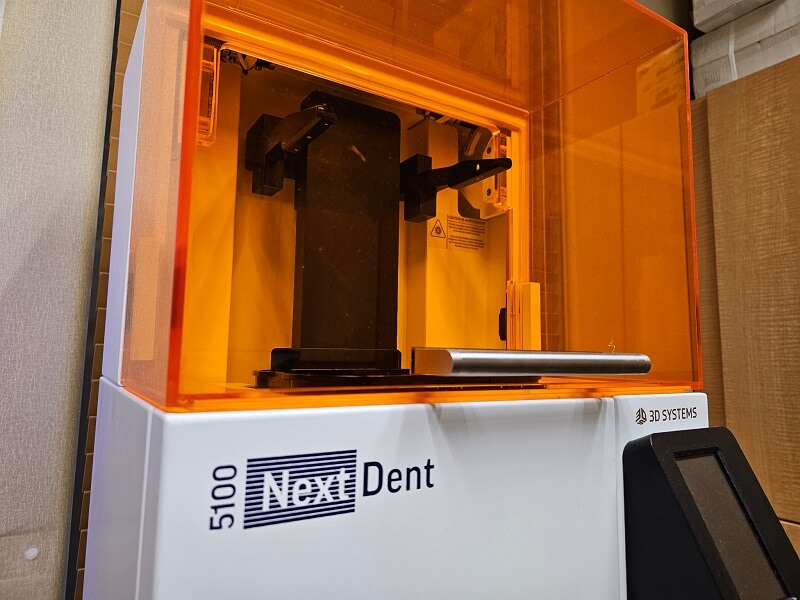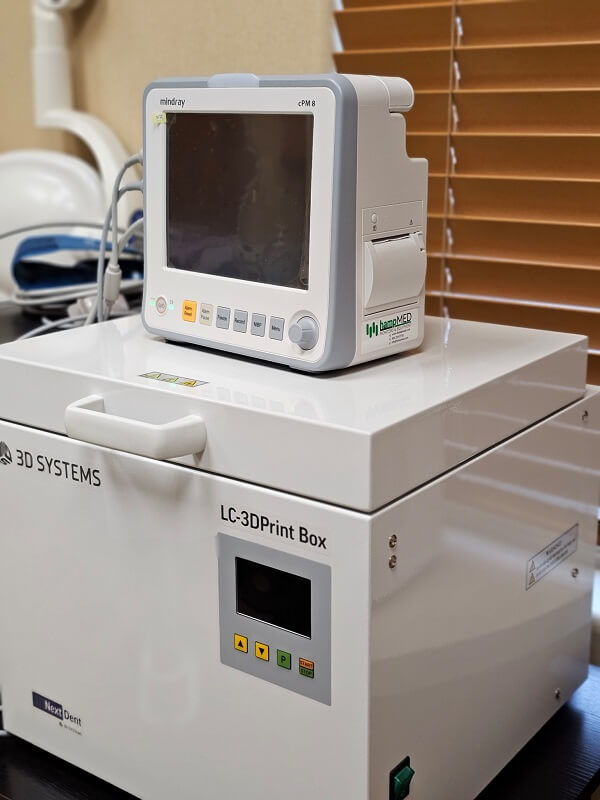3D Printing
At Image Dental, 3D printing technology is revolutionizing dental care. This cutting-edge approach enables us to create precise dental restorations and models with remarkable efficiency. Discover how 3D printing enhances accuracy in treatment planning and offers customized solutions for a variety of dental needs.

The benefits of 3D printing technology
Discover the advantages
3D printing in dentistry is a game-changer, offering unparalleled precision and customization. This technology streamlines the creation of dental restorations, orthodontic devices, and surgical guides, enhancing both patient experience and clinical outcomes. Explore the multifaceted benefits of 3D printing and how it's shaping the future of dental care.
Rapid production of dental restorations
3D printing allows for quick production of dental restorations, significantly reducing wait times for patients.
Precise surgical guides
3D printing produces precise surgical guides, aiding in accurate implant placement and other dental surgeries.
Enhanced accuracy and fit
This technology achieves highly accurate dental appliances and restorations, ensuring an improved fit and comfort.
Reduced treatment times
Efficient production processes lead to shorter treatment times and quicker results for patients.
Customized orthodontic devices
Tailor-made orthodontic devices, like aligners and retainers, are created for optimal effectiveness and patient comfort.
Innovative approach to complex cases
3D printing offers innovative solutions for complex dental cases, improving treatment possibilities and outcomes.

Book with us
Ready to take the next step?
Step into the era of precision dentistry with Image Dental’s 3D printing technology. From custom restorations to detailed surgical guides, our advanced capabilities ensure optimal treatment outcomes. Book an appointment today to experience how 3D printing can make your dental care more precise, efficient, and tailored to your needs.
FAQs
What is 3D printing in dentistry, and how is it used?
3D printing in dentistry involves creating dental devices and restorations from digital models. It's used for making crowns, bridges, veneers, orthodontic aligners, surgical guides, and more. The technology allows for rapid, precise production of these items, tailored to the specific needs of each patient.Learn more →Is 3D printing in dentistry safe?
3D printing in dentistry is safe when conducted using biocompatible materials and following proper dental practices. The materials used are specifically designed for dental use, ensuring they meet safety and quality standards.Learn more →How does 3D printing improve dental restorations?
3D printing improves dental restorations by offering high precision in design and manufacturing. This results in restorations that fit better, look more natural, and require less adjustment. It also enables the creation of more complex designs that were previously difficult to achieve.Learn more →What are the benefits of 3D printed orthodontic devices?
3D printed orthodontic devices, like aligners and retainers, offer a custom fit, improved comfort, and often shorter treatment times. They are precisely tailored to the patient's dental anatomy, providing more efficient and effective orthodontic treatment.Learn more →Can 3D printing be used for all dental treatments?
While 3D printing is incredibly versatile, it's not suitable for all dental treatments. It's primarily used for restorations, orthodontic appliances, and surgical planning. Its applicability depends on the specific case, material requirements, and the type of restoration or device needed.Learn more →How does 3D printing affect the duration of dental treatments?
3D printing often reduces the duration of dental treatments by allowing for quicker production of dental appliances and restorations. It streamlines the manufacturing process, meaning patients receive their custom dental devices faster than with traditional methods.Learn more →